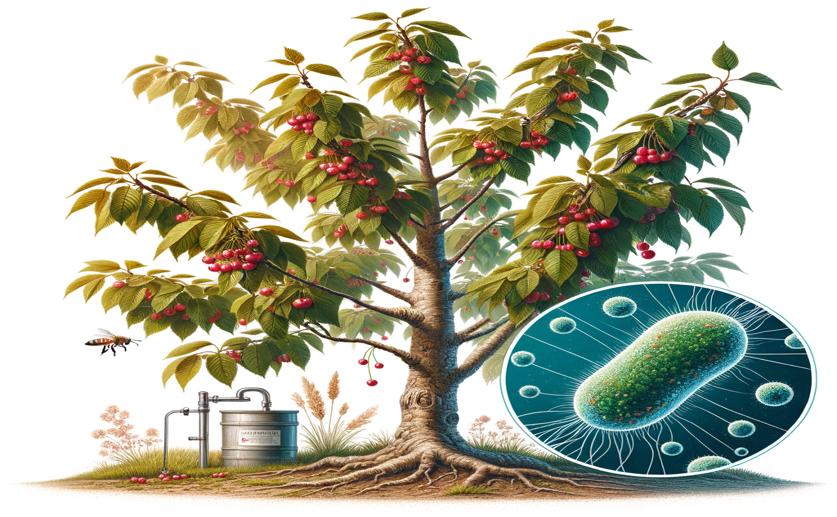
Understanding How a Harmful Bacterium Affects Sweet Cherry Trees
Greg Howard
5th September, 2024

Image Source: Natural Science News, 2024
Key Findings
- The study from the University of California, Davis, analyzed 86 fluorescent pseudomonads from sweet cherry tissues in California
- Researchers identified five genomospecies of Pseudomonas syringae, including a newly discovered genomospecies A
- Pathogenicity tests showed that P. syringae pv. syringae caused multiple symptoms, while genomospecies A was less virulent
- The study found high copper resistance in P. syringae pv. syringae but no resistance to kasugamycin, suggesting it as an effective treatment
References
Main Study
1) Pathogenicity, phylogenomic, and comparative genomic study of Pseudomonas syringae sensu lato affecting sweet cherry in California.
Published 3rd September, 2024
https://doi.org/10.1128/spectrum.01324-24
Related Studies
2) Genetic characterization of pseudomonas syringae pv. syringae strains from stone fruits in california.
Journal: Applied and environmental microbiology, Issue: Vol 64, Issue 10, Oct 1998
3) Phylogenomic analyses and comparative genomics of Pseudomonas syringae associated with almond (Prunus dulcis) in California.



 31st August, 2024 | Jenn Hoskins
31st August, 2024 | Jenn Hoskins